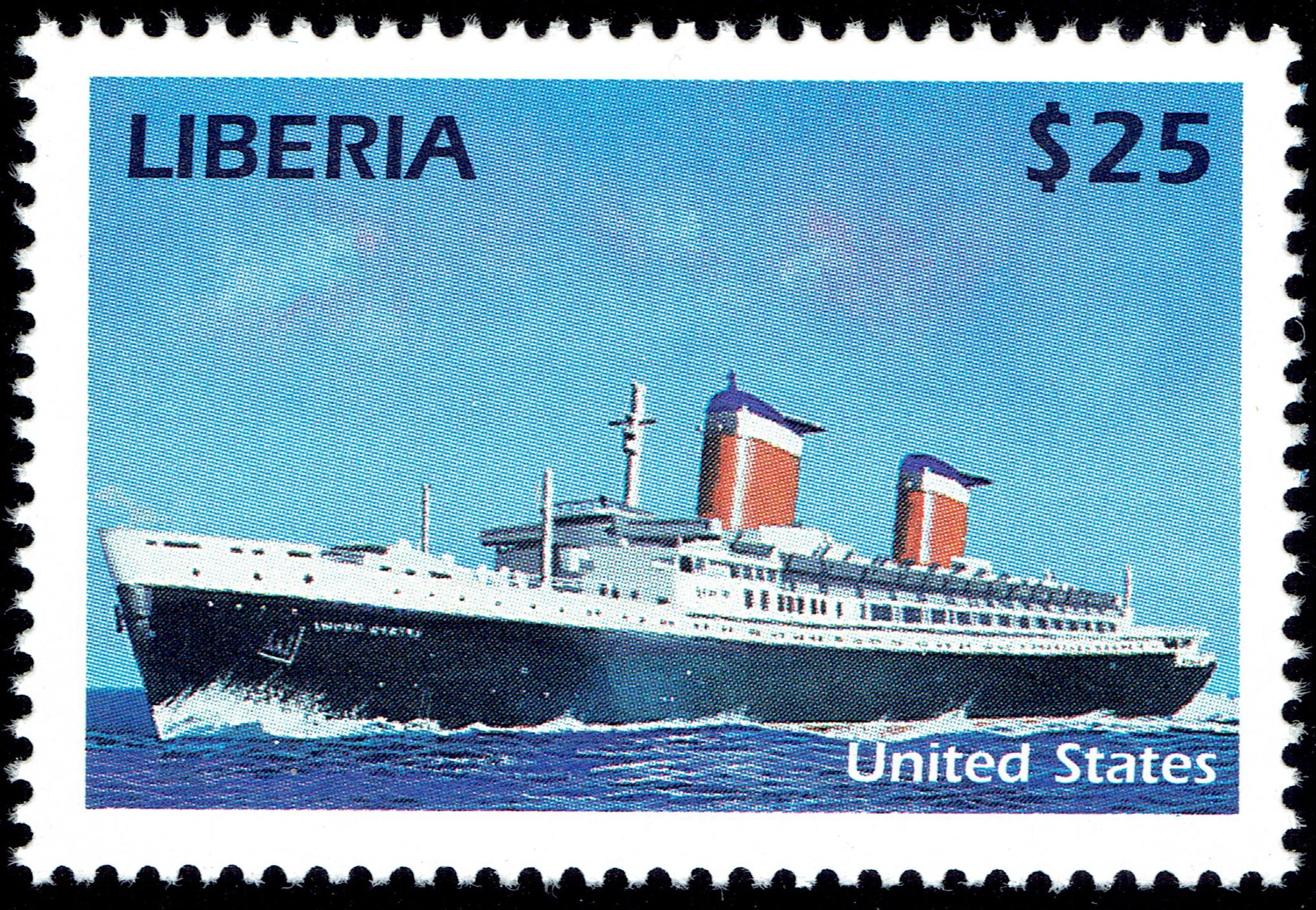
On February 8, 1950, construction began on the ocean liner SS United States at the Newport News Shipbuilding and Drydock Company in Newport News, Virginia, the first large vessel to be built in a dry dock. United States was constructed to exacting Navy specifications, which required that the ship be heavily compartmentalized, and have separate engine rooms to optimize wartime survival. She was built for United States Lines at a cost of $79.4 million ($749 million in 2017 dollar) and remains the largest ocean liner constructed entirely in the United States and the fastest ocean liner to cross the Atlantic in either direction, retaining the Blue Riband for the highest average speed since her maiden voyage in July 1952. She was designed by American naval architect William Francis Gibbs and could be turned into a troopship if required by the Navy in times of war. United States operated an uninterrupted schedule of transatlantic passenger service until 1969 and was never used as a troopship.
The ship has been sold several times since the 1970s, with each new owner trying unsuccessfully to make the liner profitable. Eventually, the ship’s fittings were sold at auction. Hazardous wastes, including asbestos panels throughout the ship, were removed leaving her almost completely stripped by 1994. Two years later, she was towed to Pier 82 on the Delaware River in Philadelphia where she remains today.
Since 2009, a preservation group called the SS United States Conservancy has been raising funds to save the ship. The group purchased her in 2011 and has made several plans to restore the ship which have failed to materialize, one of which included a multi-purpose waterfront complex. As their funds dwindled in 2015, the group began accepting bids to scrap the ship; however, sufficient donations came in via extended fundraising. Donations in the six figures have kept the ship berthed at its Philadelphia dock while the group continues to investigate restoration plans.
Inspired by the service of the British liners RMS Queen Mary and Queen Elizabeth, which transported hundreds of thousands of U.S. troops to Europe during World War II, the U.S. government sponsored the construction of a large and fast merchant vessel that would be capable of transporting large numbers of soldiers. Designed by American naval architect and marine engineer William Francis Gibbs, the liner’s construction was a joint effort between the United States Navy and United States Lines. The U.S. government underwrote $50 million of the $78 million construction cost, with the ship’s operators, United States Lines, contributing the remaining $28 million. In exchange, the ship was designed to be easily converted in times of war to a troopship. The ship has a capacity of 15,000 troops, and could also be converted to a hospital ship.
The vessel was constructed from 1950–1952 at the Newport News Shipbuilding and Drydock Company in Newport News, Virginia. A large part of the construction of United States was with prefabricated sections. The ship’s hull comprised 183,000 separately fabricated sections.
During World War II, the French liner SS Normandie had been seized by U.S. authorities in New York and renamed the USS Lafayette. On February 9, 1942, the liner caught fire while being converted to a troopship by the U.S. Navy. After millions of gallons of water had been pumped into her in an attempt to extinguish the flames she capsized onto her port side and came to rest on the mud of the Hudson River at Pier 88; this is the current site of the New York Passenger Ship Terminal.

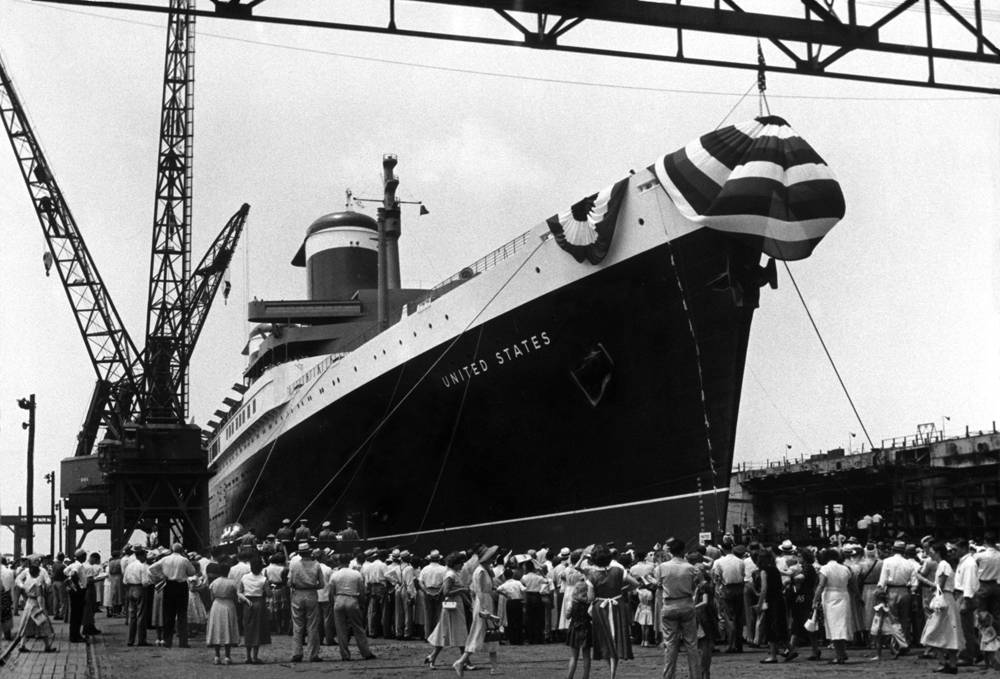
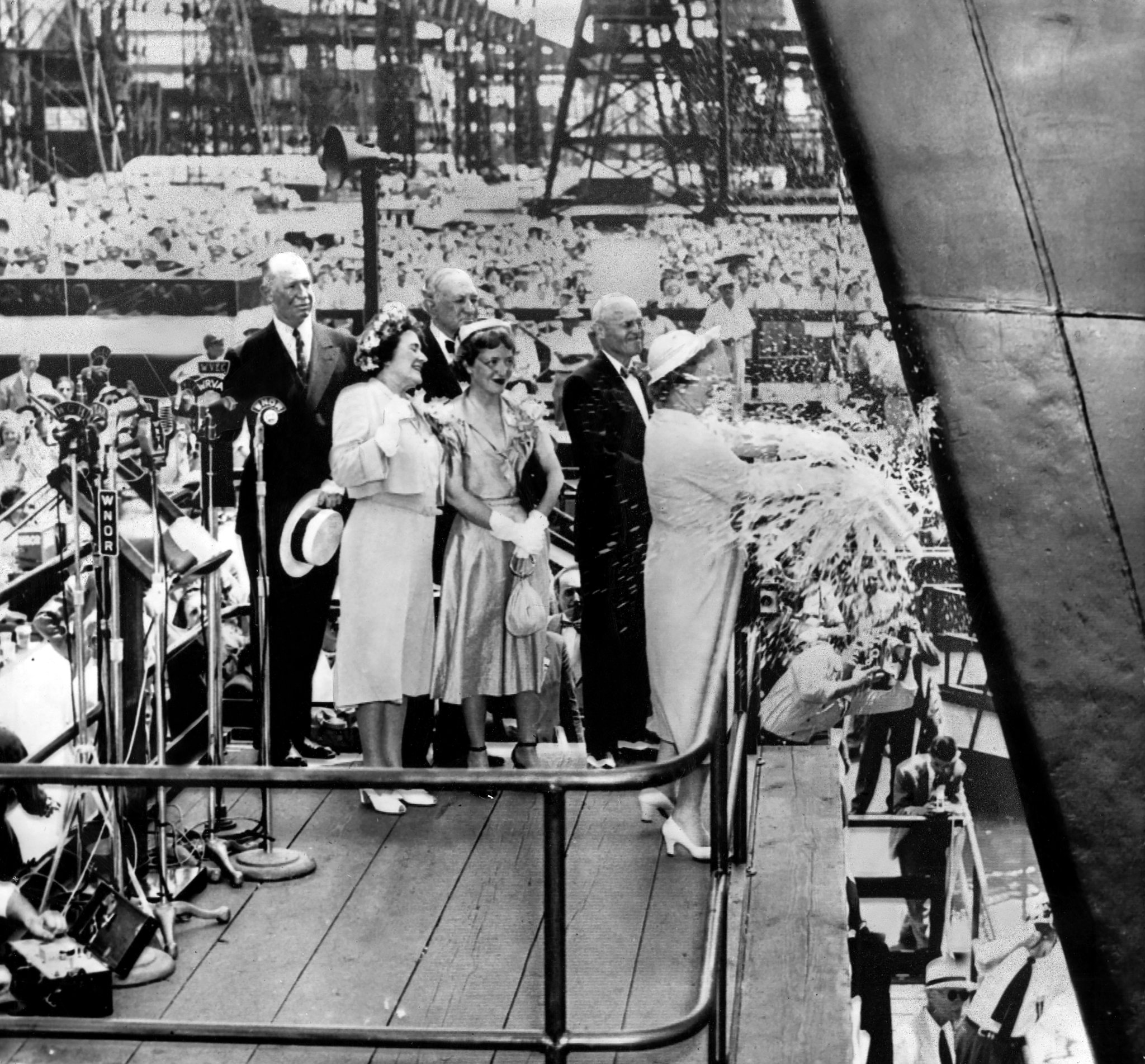
As a result of this disaster, the design of the United States incorporated the most rigid U.S. Navy standards. To minimize the risk of fire, the designers of United States used no wood in the ship’s framing, accessories, decorations, or interior surfaces. Fittings, including all furniture and fabrics, were custom made in glass, metal, and spun glass fiber to ensure compliance with fireproofing guidelines set by the U.S. Navy. Asbestos-laden paneling were used extensively in interior structures. Specially commissioned artwork included pieces by fourteen artists, including Nathaniel Choate, muralist Austin M. Purves, Jr., and sculptor Gwen Lux. Although the galley did feature a butcher block, the clothes hangers in the luxury cabins were aluminum. The ballroom’s grand piano was made from a rare, fire-resistant wood species — although originally specified in aluminum — and accepted only after a demonstration in which gasoline was poured upon the wood and ignited, without the wood itself ever catching fire.
The construction of the ship’s superstructure involved the most extensive use of aluminum in any construction project up to that time and posed a Galvanic corrosion challenge to the builders in joining the aluminum structure to the steel decks below. The extensive use of aluminum provided significant weight savings. United States had the most powerful steam turbines of any merchant marine vessel at the time, with a total power of 240,000 shaft horsepower (180 MW) delivered to four 18-foot (5.5 m) diameter manganese-bronze propellers. The ship was capable of steaming astern at over 20 knots (37 km/h; 23 mph), and could carry enough fuel and stores to steam non-stop for over 10,000 nautical miles (19,000 km; 12,000 mi) at a cruising speed of 35 knots (65 km/h; 40 mph).
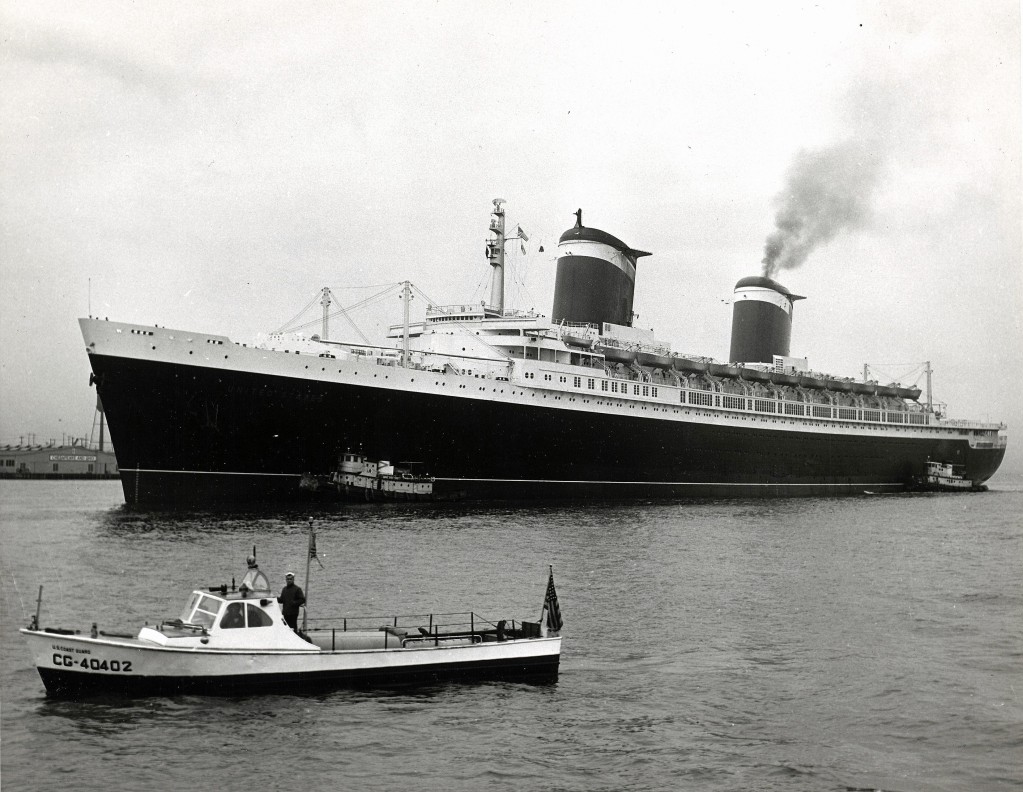

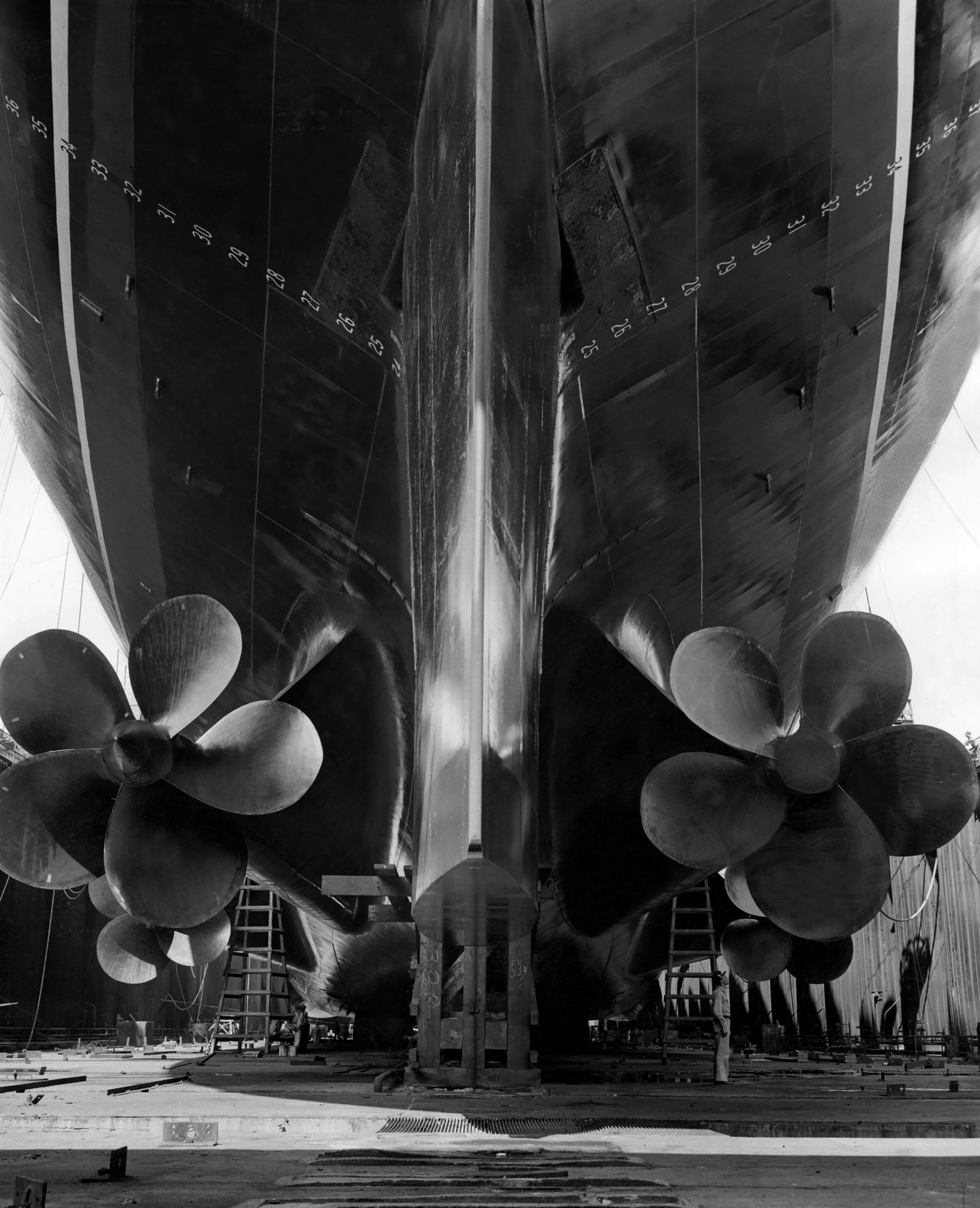

During her maiden voyage which departed from New York harbor on July 3, 1952, United States broke the transatlantic speed record held by the RMS Queen Mary for the previous 14 years by over 10 hours, making the maiden crossing from the Ambrose lightship at New York Harbor to Bishop Rock off Cornwall, UK in 3 days, 10 hours, 40 minutes at an average speed of 35.59 knots (65.91 km/h; 40.96 mph). United States‘ maximum speed was deliberately exaggerated, and kept obscure for many years. An unlikely value of 43 knots (80 km/h; 49 mph) was leaked to reporters by engineers after the first speed trial. A Philadelphia Inquirer article reported the top speed achieved as 36 knots (67 km/h; 41 mph), while another source reports that the highest possible sustained top speed was 35 knots (65 km/h; 40 mph).
In addition to breaking the eastbound transatlantic speed record held by the Queen Mary, the liner also broke the westbound crossing record by returning to America in 3 days 12 hours and 12 minutes at an average speed of 34.51 knots (63.91 km/h; 39.71 mph). With both the eastbound and westbound speed records, the United States obtained the Blue Riband which marked the first time a U.S.-flagged ship had held the record since the SS Baltic claimed the prize 100 years earlier. United States maintained a 30 knots (56 km/h; 35 mph) crossing speed on the North Atlantic in a service career that lasted 17 years. The liner lost the eastbound speed record in 1990 to Hoverspeed Great Britain; however, she continues to hold the Blue Riband as all subsequent record breakers were neither in passenger service nor were their voyages westbound.



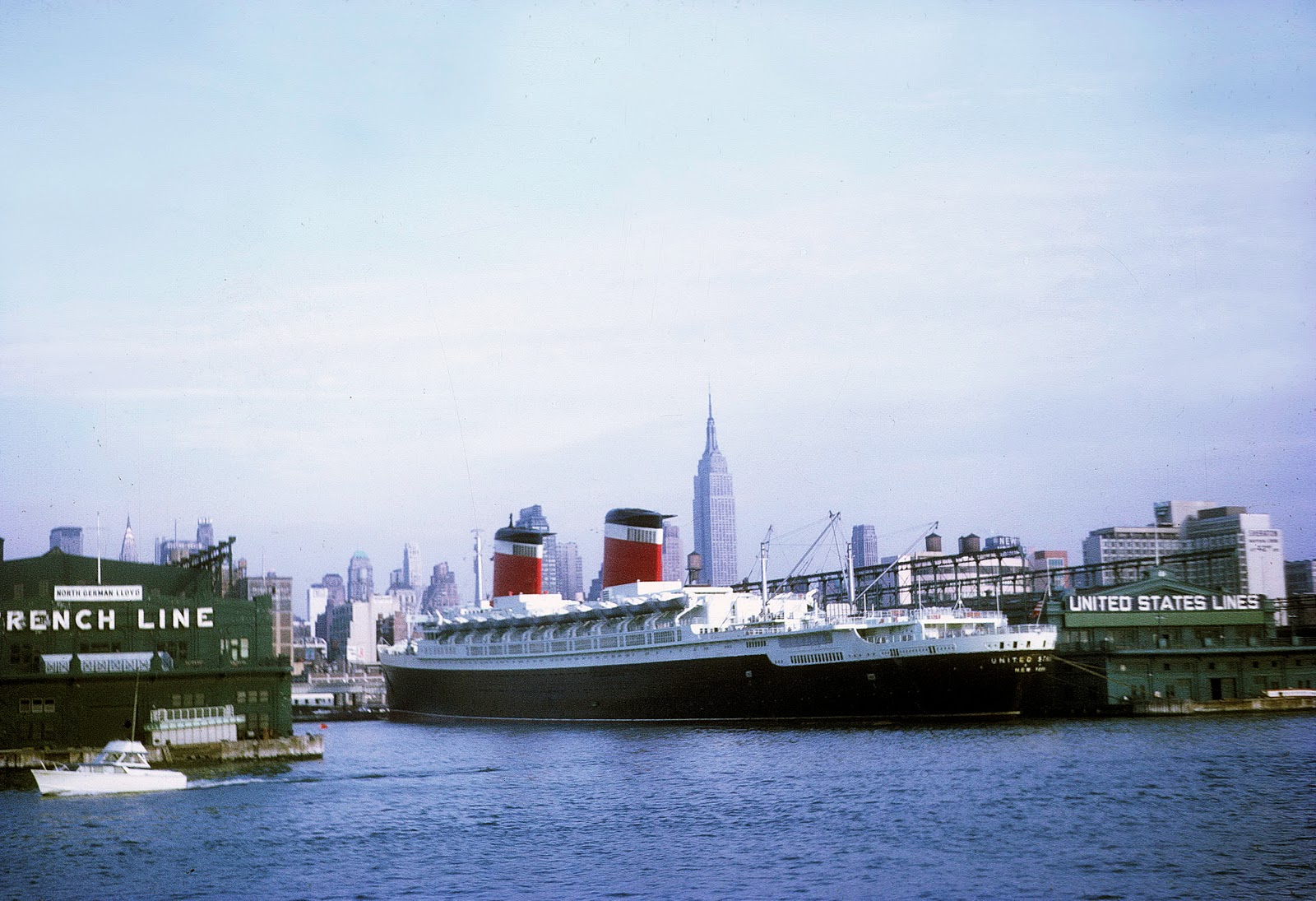
By the late 1960s, the market for transatlantic travel by ship had dwindled. The SS America of United States Lines had been sold in 1964, the Queen Mary had been retired in 1967, and the Queen Elizabeth in 1968; The United States was no longer profitable. While the United States was at Newport News for annual overhaul in 1969, the shipping line decided to withdraw her from service, leaving the ship docked at the port. After a few years, the ship was relocated to Norfolk, Virginia. Subsequently, ownership passed between several companies.
In 1977, a group headed by Harry Katz sought to purchase the ship and dock it in Atlantic City, New Jersey, where it would be used as a hotel and casino. However, nothing came of the plan. The vessel was sold in the following year for $5 million to a group headed by Richard Hadley who hoped to revitalize the liner in a time share cruise ship format. In 1979, Norwegian Cruise Line (NCL) was reportedly interested in purchasing the ship and converting her into a cruise ship for cruises in the Caribbean, but decided on purchasing the former SS France instead. During the 1980s, the United States was considered by the U.S. Navy to be converted into a troopship or a hospital ship, to be called USS United States. This plan never materialized, being dropped in favor of converting two San Clemente class supertankers.
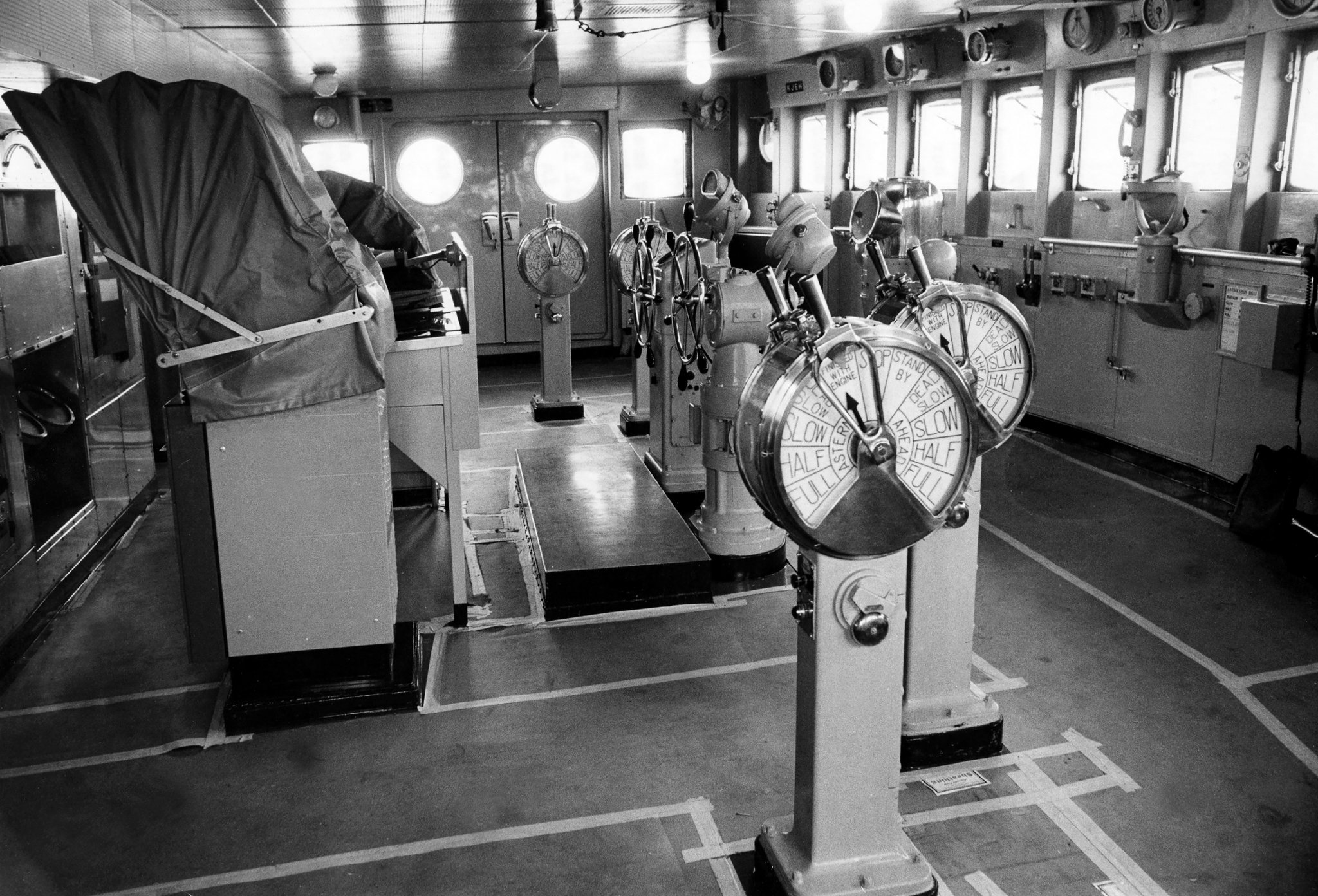



By 1984, the ship’s remaining fittings and furniture were sold at auction in Norfolk. Some of the furniture was installed in Windmill Point, a restaurant in Nags Head, North Carolina. Richard Hadley’s plan of a time share style cruise ship eventually failed financially, and the ship was put up for auction by MARAD in 1992. At auction, Marmara Marine Inc. purchased the ship, which was headed by Edward Cantor and Fred Mayer, who paid $2.6 million for the ship. The company was majority-owned by Juliedi Sadikoglu of the Turkish shipping family. The ship was towed to Turkey and then Ukraine, where in Sevastopol Shipyard she underwent asbestos removal which lasted from 1993 into 1994. The interior of the ship was almost completely stripped during this time. No viable agreements were reached in the U.S. for a reworking of the vessel, and in 1996 the United States was towed to her current location at Pier 84 in South Philadelphia.
In November 1997, Edward Cantor purchased the ship for $6 million. Two years later, the SS United States Foundation and the SS United States Conservancy (then known as the SS United States Preservation Society, Inc.) succeeded in having the ship placed on the National Register of Historic Places.
In 2003, Norwegian Cruise Line (NCL) purchased the ship at auction from Cantor’s estate after his death. NCL’s intent was to fully restore the ship to a service role in their newly announced American-flagged Hawaiian passenger service called NCL America. The United States is one of the few ships eligible to enter such service because of the Passenger Service Act, which requires that any vessel engaged in domestic commerce be built and flagged in the U.S. and operated by a predominantly American crew. In August 2004, NCL commenced feasibility studies regarding a new build-out of the vessel and in May 2006 Tan Sri Lim Kok Thay, chairman of Malaysia-based Star Cruises (which owns NCL), stated that the company’s next project is “the restoration of the … United States.” Meanwhile, the Windmill Point restaurant, which had contained some of the original furniture from the United States, closed in 2007. The ship’s furniture was donated to the Mariners’ Museum and Christopher Newport University, both in Newport News, Virginia.

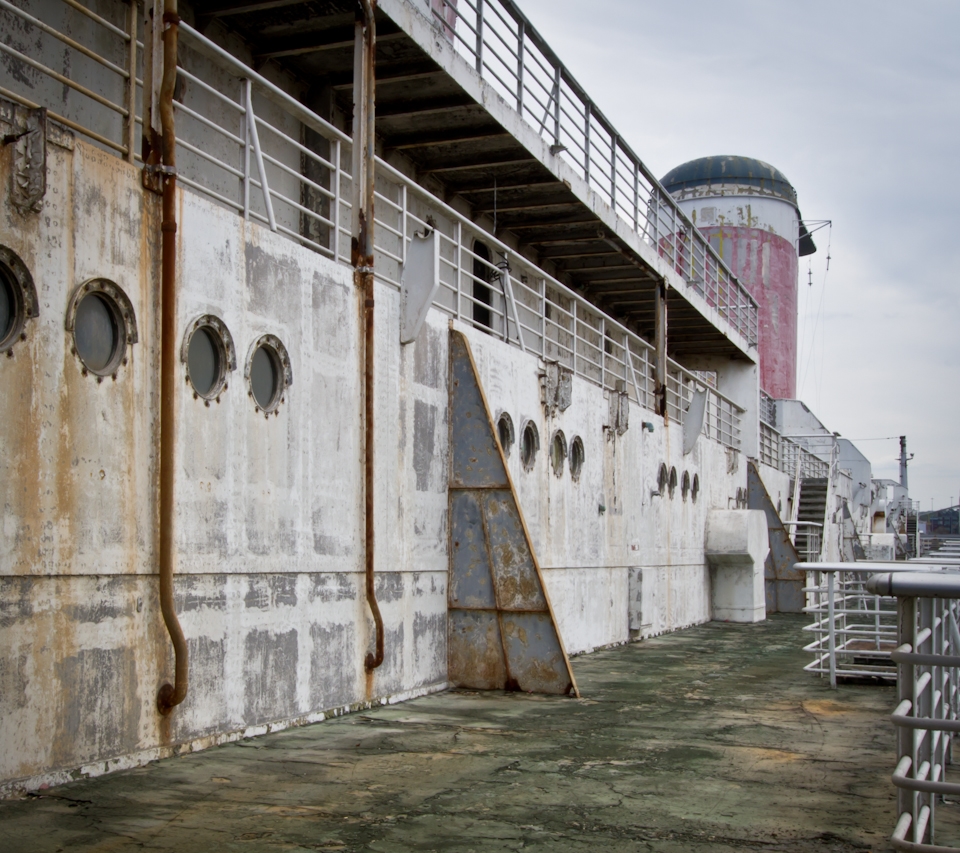
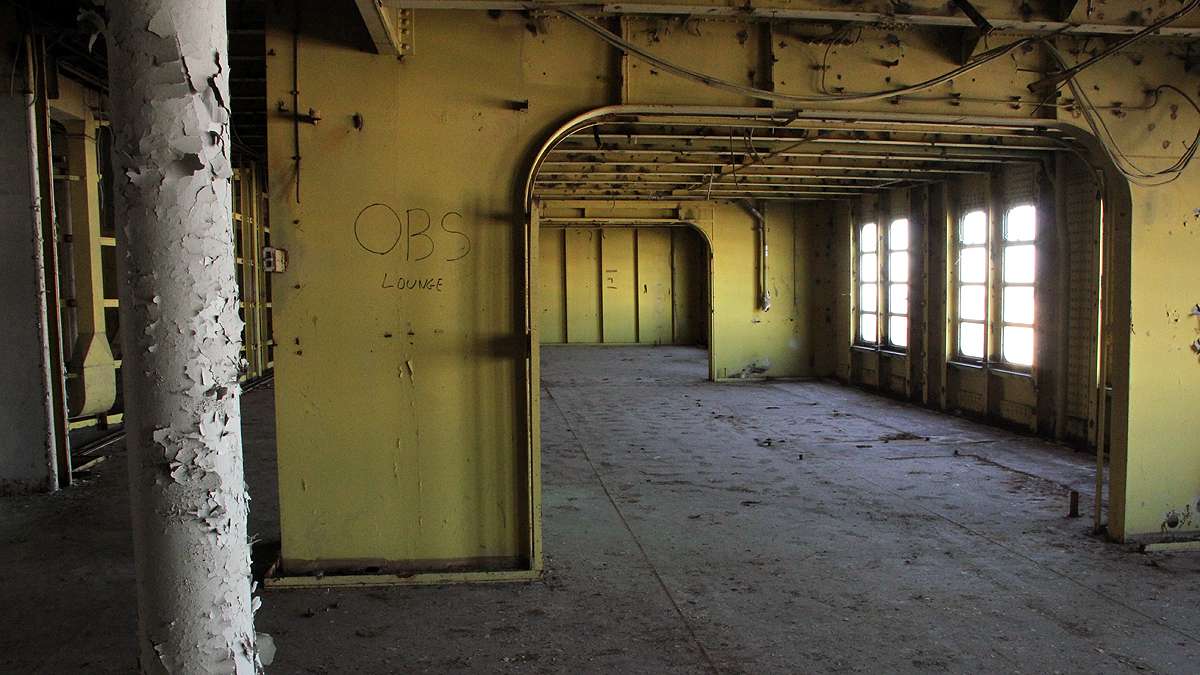
By May 2007, an extensive technical review had been completed, with NCL stating that the ship was in sound condition. The cruise line has over 100 boxes of the ship’s blueprints cataloged. While this documentation is not complete, NCL believed it would provide useful information for the planned refit. When NCL America first began operation it used the Pride of America, Pride of Aloha, and Pride of Hawaii, rather than United States. NCL American later withdrew Pride of Aloha and Pride of Hawaii from its Hawaiian service.
In February 2009, it was reported that Star Cruises, to whom United States‘ ownership was transferred, and NCL were looking into buyers for the liner. The SS United States Conservancy was then created that year as a group trying to save United States by raising funds to purchase her. On July 30, 2009, H. F. Lenfest, a Philadelphia media entrepreneur and philanthropist, pledged a matching grant of $300,000 to help the United States Conservancy purchase the vessel from Star Cruises. A noteworthy supporter, former U.S. president Bill Clinton, has also endorsed rescue efforts to save the ship, having sailed on her himself in 1968.
In March 2010, it was reported that scrapping bids for the ship were being collected. Norwegian Cruise Lines, in a press release, noted that there are large costs associated with keeping United States afloat in her current state — around $800,000 a year — and that, as the SS United States Conservancy had not been able to tender an offer for the ship, the company was actively seeking a “suitable buyer.” By May 7, 2010, over $50,000 had been raised by The SS United States Conservancy. A deal was finally struck with NCL on July 1, 2010 to buy SS United States for a reported $3 million despite a scrapper’s bid for $5.9 million. The Conservancy was given until February 2011 to buy the ship and satisfy Environmental Protection Agency concerns related to toxins on the ship. The group had funds to last 20 months (from July 1, 2010) that were to go to supporting a development plan to clean the ship of toxins and make the ship financially self-supporting as possibly a hotel or development project. SS United States Conservancy executive director Dan McSweeney stated that he planned on placing the ship at possible locations that include Philadelphia, New York City and Miami.

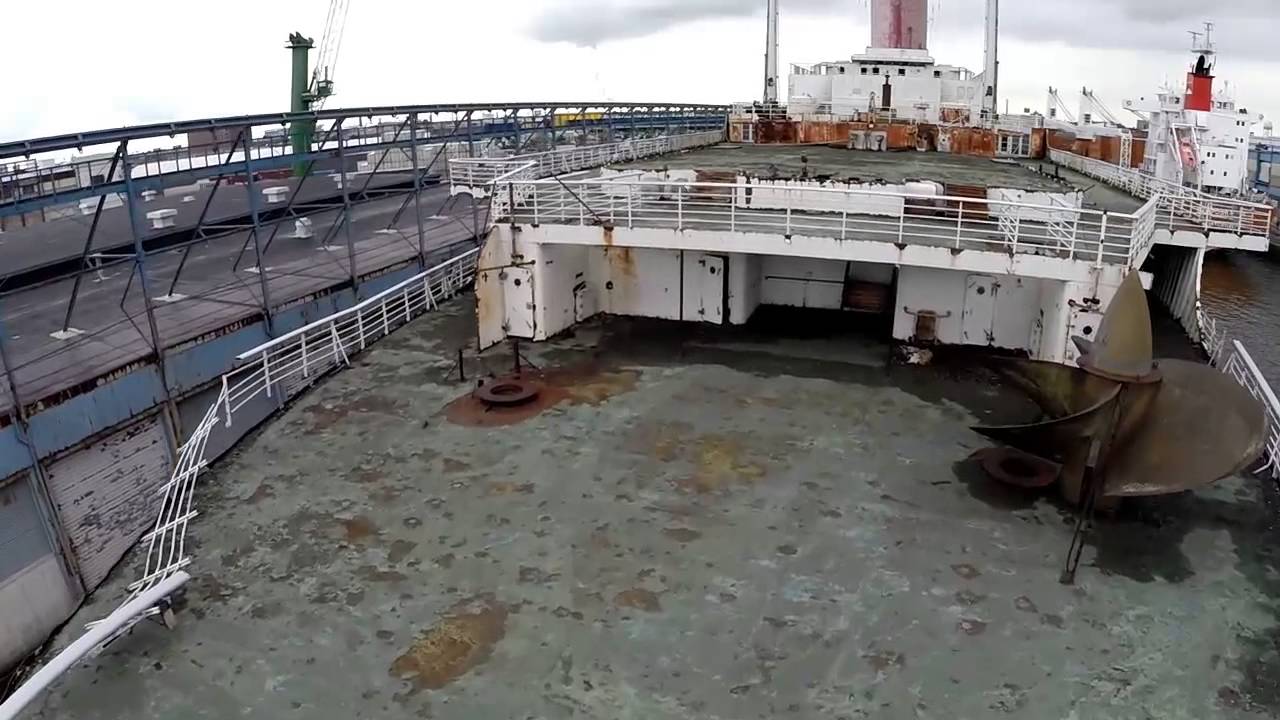

In November 2010, the Conservancy announced a plan to develop a “multi-purpose waterfront complex” with hotels, restaurants and a casino along the Delaware River in South Philadelphia at the proposed location for the stalled Foxwoods Casino project. A detailed study for the site was revealed in late November 2010, in advance of Pennsylvania’s December 10, 2010 deadline for a deal aimed at Harrah’s Entertainment taking over the casino project. The deal soon fell through though when on December 16, 2010, the Gaming Control Board voted to revoke the casino’s license.
The SS United States Conservancy assumed ownership of United States on February 1, 2011. Talks about possible locations in Philadelphia, New York City and Miami continued into March. In New York City, negotiations with a developer were underway for the ship to become part of the Vision 2020, a waterfront redevelopment plan totaling US$3.3 billion. In Miami, Ocean Group in Coral Gables were also interested in putting the ship in a slip on the north side of American Airlines Arena. With an additional US$5.8 million donation from H. F. Lenfest, the conservancy had about 18 months from March 2011 to make the ship a public attraction.
On August 5, 2011, the SS United States Conservancy announced that after conducting two studies focused on placing the ship in Philadelphia it was “not likely to work there for a variety of reasons.” However, discussions to place the ship in her original home port of New York as a stationary attraction were reported to be ongoing. The Conservancy’s grant specifies that the refit and restoration must be done in the Philadelphia Naval Shipyard for the benefit of the Philadelphia economy, regardless of her eventual mooring site; the Conservancy continued to negotiate with possible stakeholders in the New York area.
On February 7, 2012, preliminary work began on the restoration project to prepare the ship for her eventual rebuild, although a contract had not yet been signed. In April 2012, a Request for Qualifications (RFQ) was released as the start of an aggressive search for a developer for the ship. A Request for Proposals (RFP) was issued in May. In July 2012, the SS United States Conservancy launched a new online campaign called “Save the United States”, a blend of social networking and micro-fundraising, that allowed donors to sponsor square inches of a virtual ship for redevelopment, while allowing them to upload photos and story content about their experience with the ship. The Conservancy announced that donors to the virtual ship would be featured in an interactive “Wall of Honor” aboard the future SS United States museum. Six million dollars had been raised by September 2012 to turn the ship into a permanent waterfront attraction.
A developer was to be chosen by the end of 2012 with the intent of putting the ship in a selected city by summer 2013. The ship, however, remained in Philadelphia. In November 2013, it was reported that United States was undergoing a “below-the-deck” makeover which lasted into 2014 in order to make the ship more appealing for developers as a dockside attraction. The SS United States Conservancy was warned though that if its plans did not come together quickly, there might be no choice but to sell the ship for scrap.
In January 2014, obsolete pieces of the ship were sold to keep up with the $80,000 a month maintenance costs. Enough money was raised to keep the ship going for another six months with the hope of finding someone committed to the project, with New York City still being the frontrunner target location. On July 3, 2014, The SS United States Conservancy held a flag-raising ceremony commemorating the ship’s maiden voyage. An American flag was raised first to honor Independence Day, then the house flag of the ship’s former operating company, United States Lines (donated by the trademark owner Hector L. Aponte III) was raised. This occasion was the first time the ship had flown its company flag since the ship was decommissioned in 1969.
By August 2014, the ship was still moored in Philadelphia and costs for the ship’s rent amounted to $60,000 a month. It was estimated that it would take one billion dollars to put the United States back on the high seas, though a 2016 estimate for restoration as a luxury cruise ship was said to be, “as much as $700 million”. On September 4, 2014, a final push was made to have the ship be bound for New York City. A developer interested in re-purposing the ship into a major waterfront destination made an announcement regarding the move. The Conservancy had only weeks to decide if the ship needed to be sold for scrap. On December 15, 2014, preliminary agreements in support of the redevelopment of the SS United States were announced. The agreements included three months of carrying costs, with a timeline and more details to be released sometime in 2015. In February 2015, another $250,000 was received by the conservancy from an anonymous donor which went towards planning an onboard museum.

As of October 2015, the SS United States Conservancy had begun exploring potential bids for scrapping the ship. The group was running out of money to cover the $60,000 per month cost to dock and maintain the ship. Attempts to repurpose the ship continued. Potential ideas included using the ship for hotels, restaurants, or office space. One idea floated was to install computer servers in the lower decks and link them to software development businesses in office space on the upper decks. However, no firm plans were announced. The conservancy said that if no progress was made by October 31, 2015, they would have no choice but to sell the ship to a “responsible recycler.” As the deadline passed it was announced that $100,000 had been raised in October 2015, sparing the ship from immediate danger. By November 23, 2015, it was reported that over $600,000 in donations had been received for care and upkeep, buying time well into the coming year for the SS United States Conservancy to press ahead with a plan to redevelop the vessel.
On February 4, 2016, Crystal Cruises announced that it had signed a purchase option for the SS United States. Crystal would cover docking costs in Philadelphia for nine months while conducting a feasibility study on returning the ship to service as a cruise ship based in New York City. It was announced on April 9, 2016, that 600 artifacts from United States would be returned to the ship from the Mariners’ Museum and other donors.
The plan was formally dropped on August 5, 2016, citing too many technical and commercial challenges. Crystal Cruises then made a donation of $350,000 to help with preservation through the end of the year. The SS United States Conservancy also continued to receive donations which included one for $150,000 by cruise industry executive Jim Pollin. If the group runs out of money, alternative plans for recycling the ship include turning the United States into an artificial reef rather than scrapping her.
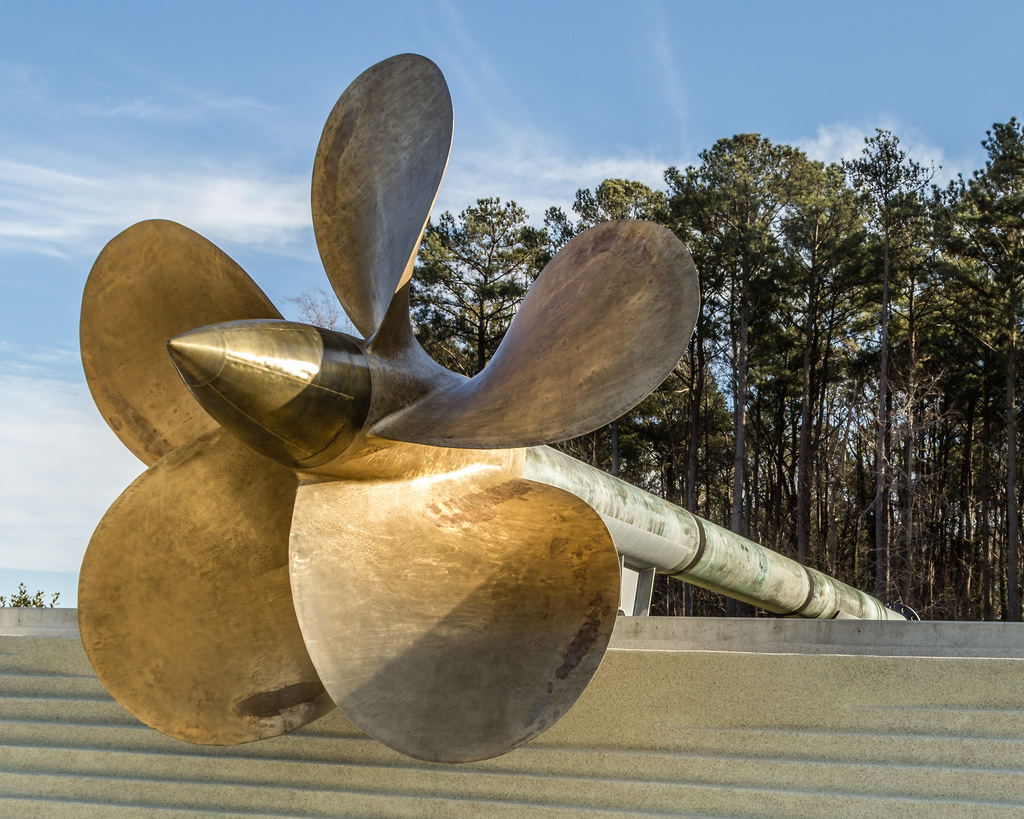
One of the ship’s 60,000-pound propellers is mounted at the entrance to the Intrepid Sea-Air-Space Museum in New York City. Another one stands on a platform near the waterfront at SUNY Maritime College at Fort Schuyler, New York. Across Long Island Sound from SUNY Maritime College, a third propeller is mounted at the United States Merchant Marine Academy and is used as a teaching aid for merchant mariners. In 2008, a fourth propeller was put on display at the entrance of the Mariner’s Museum in Newport News, Virginia.
The Scott Postage Stamp Catalogue doesn’t list any of the stamps issued between August 30, 1999 (Scott #1485-1488, featuring dogs) and a set portraying Norman Rockwell paintings released on January 10, 2005 (Scott #2325-2332). This was because the country was “torn by a brutal and chaotic civil war that reduced the nation to a state of anarchy.”

Thus, finding information about any stamps issued during this time purported as coming from Libya can be difficult, at least for collectors in the United States (I have no idea if Stanley Gibbons, Michel or other catalogues include these issues). However, I have found (presumably) full listings on the StampWorld website which bills itself as “the most complete stamp catalogue in the world”.
On November 22, 1999, a set of six stamps with varying denominations, three mini-sheets each containing six Libyan $25 stamps, and three mini-sheets with one $100 stamp each were released under the title “The 20th Century by Sea and Air” (#2611-2637 under the StampWorld numbering system). Each of the mini-sheets contains a short paragraph giving a brief history of the stamps or aircraft pictured thereon. It’s an attractive set but, thus far, I have only been able to purchase a few of the individual stamps and have yet to find any of the mini-sheets for sale. United States appears in one of two six-stamp sheets picturing ocean liners, StampWorld #2632, with a perforation gauge of 14¼.
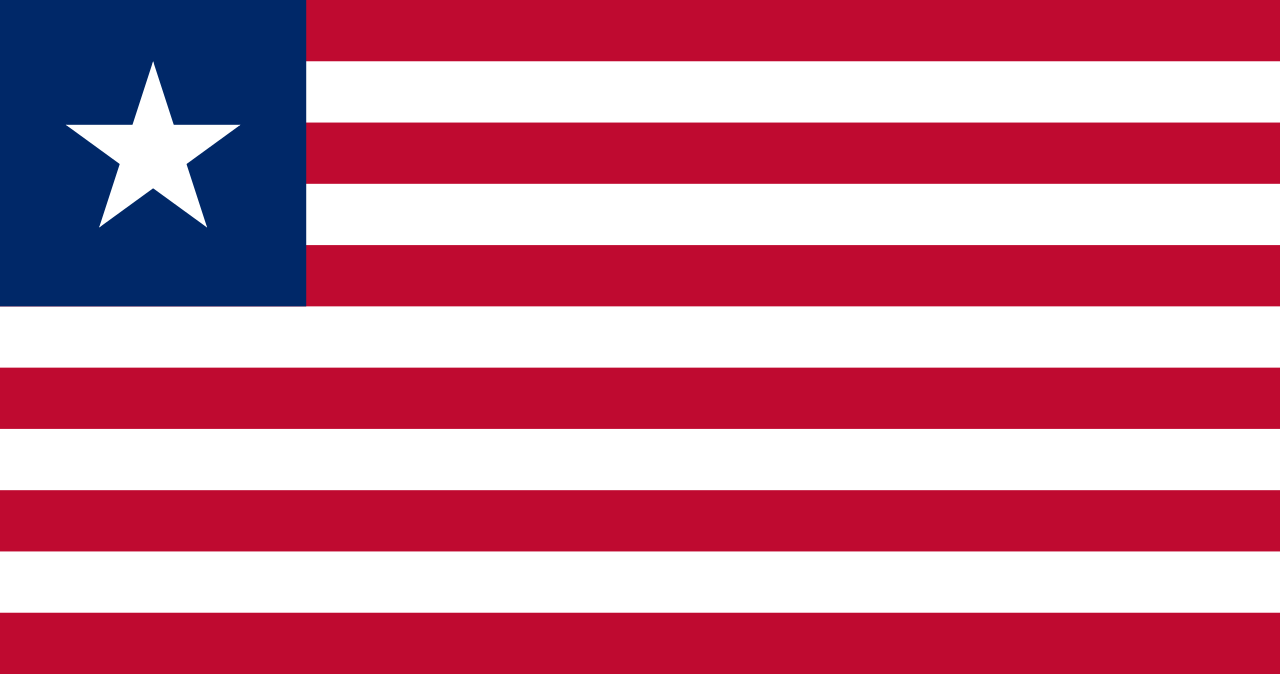




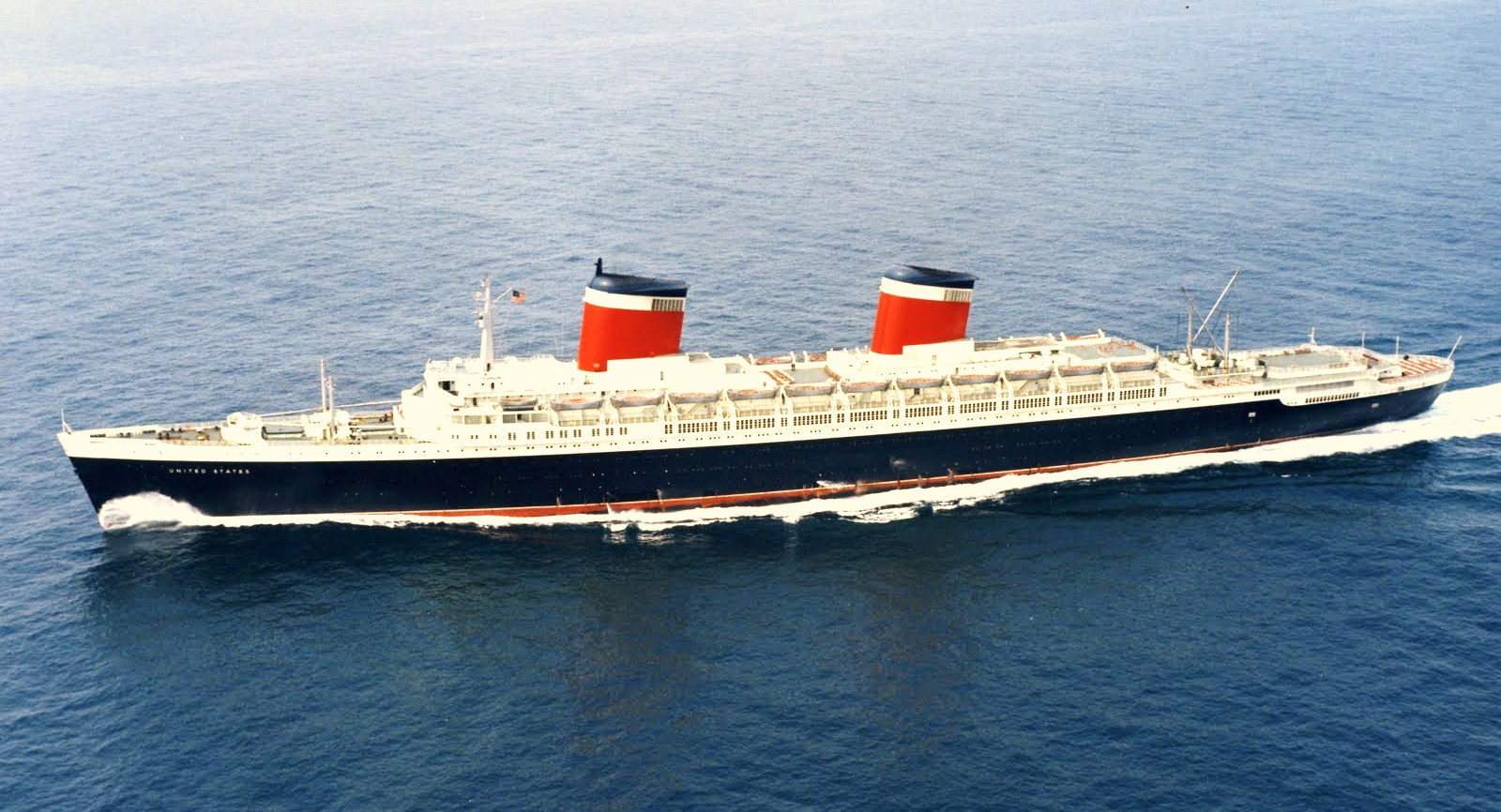


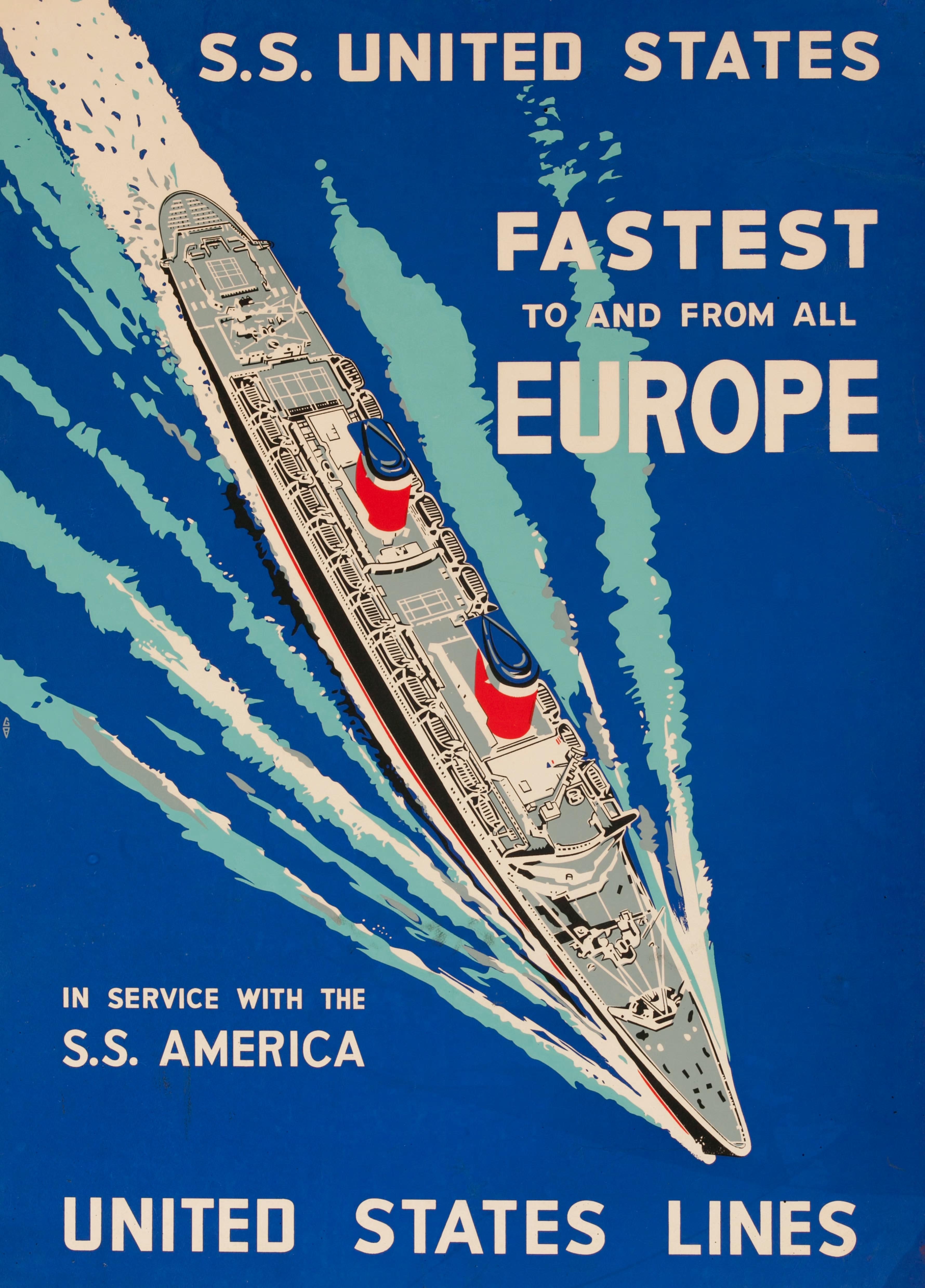

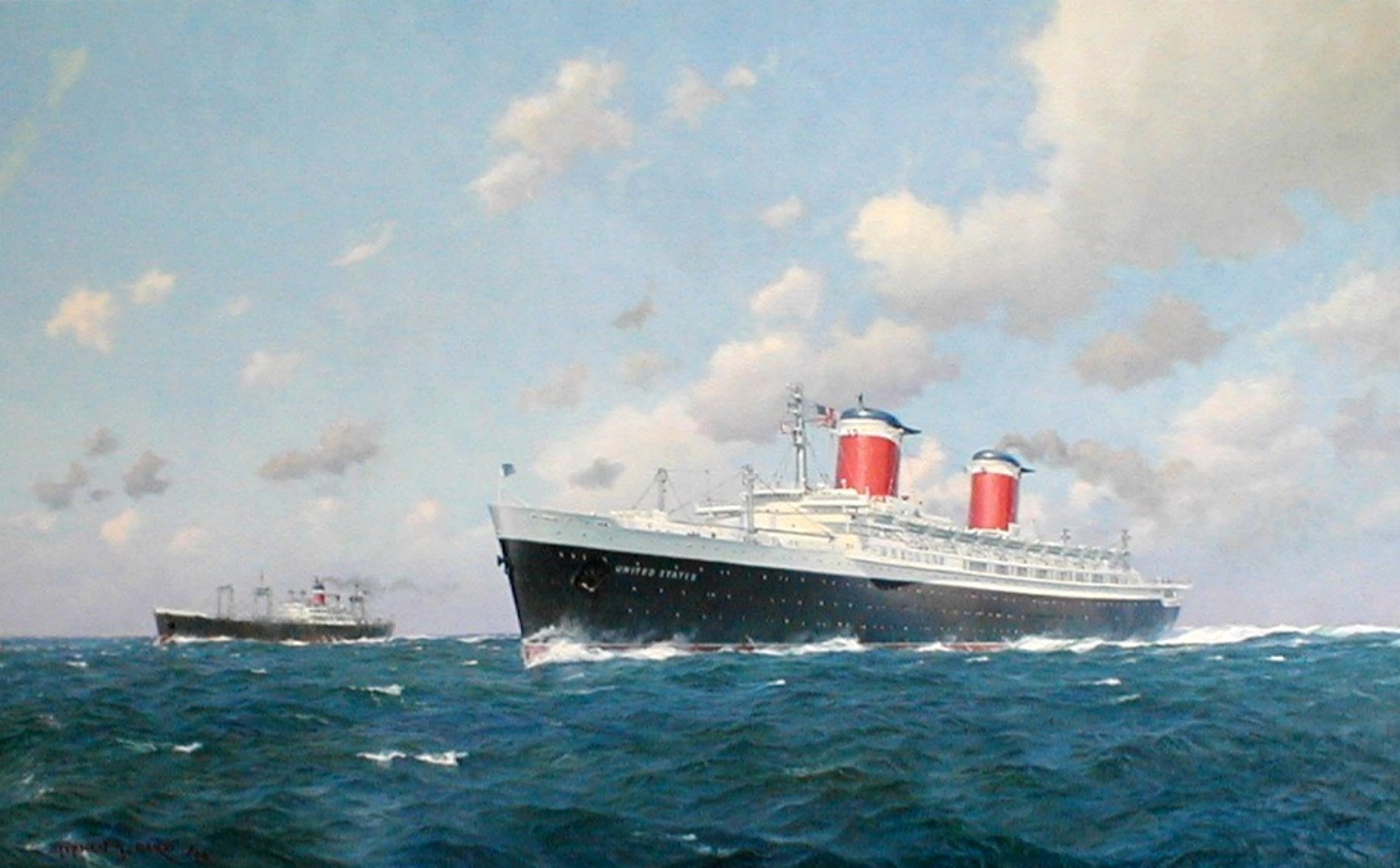


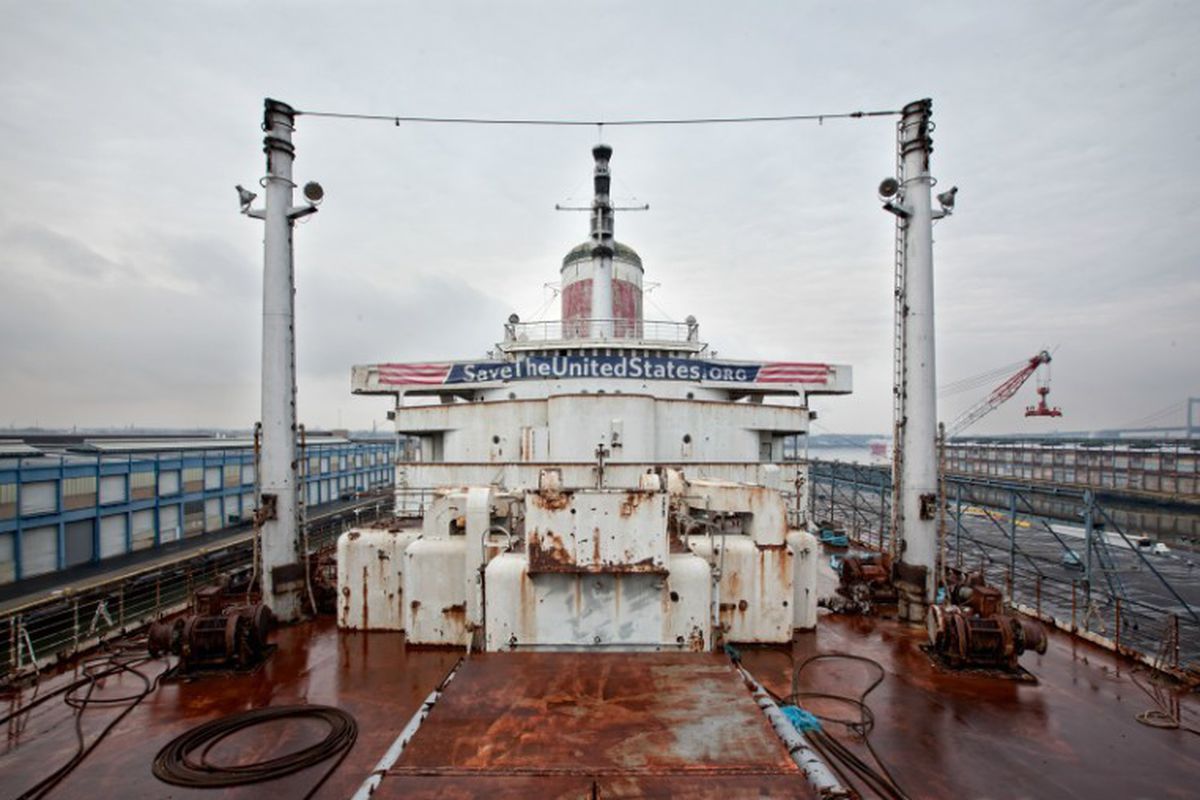



One thought on “The Birth, Career & Sad Deterioration of SS United States”